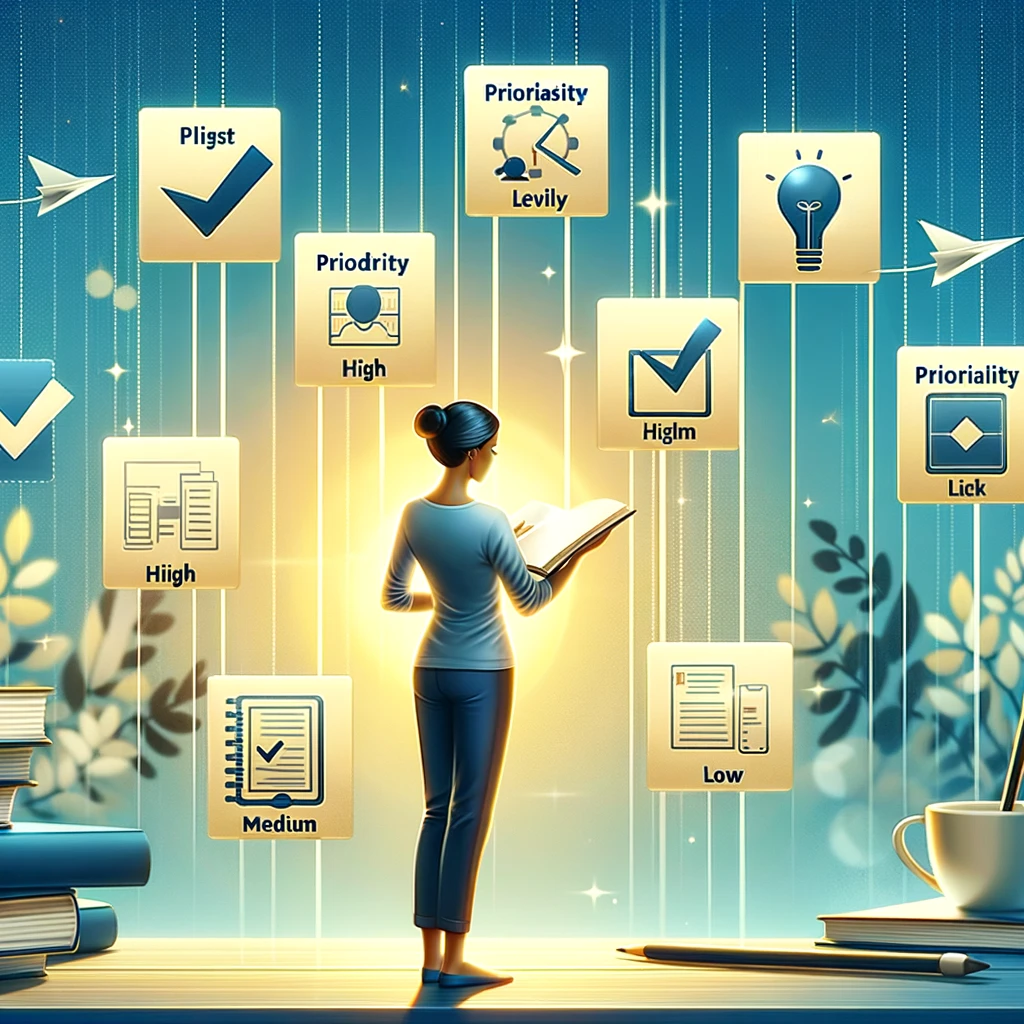Feeling overwhelmed and busy but not actually being productive? It may be time to re-evaluate your approach to prioritizing tasks and activities. Learning how to effectively prioritize can help boost your productivity and ensure you’re spending time on the things that really matter.
Here are three tried-and-true methods for mastering the art of prioritization:
1. The Eisenhower Matrix
The Eisenhower Matrix is a simple productivity tool that helps you categorize tasks into four quadrants based on urgency and importance:
- Urgent & Important – Tasks that need immediate attention and are aligned with your goals. Focus your efforts here.
- Important but not Urgent – Tasks that matter but don’t require your immediate attention. Schedule time for these.
- Urgent but not Important – Tasks that feel urgent but aren’t actually that important. Learn to manage these tasks appropriately.
- Not Important & Not Urgent – Tasks that can be eliminated or delegated. Don’t spend time here.
Using the Eisenhower Matrix when planning your day ensures you’re focused on high-priority tasks.
2. The SMITN Method
SMITN is an acronym that stands for:
- Single
- Most Important
- Immediate
- Negotiable
- Task
This method encourages you to choose the single most important task that requires your immediate attention and focus all your energy there. Once complete, move on to the next.
The SMITN approach minimizes multitasking and ensures progress on your most crucial activities.
3. The Pareto Principle
Also known as the 80/20 rule, the Pareto Principle states that 80% of results come from 20% of efforts.
When applied to prioritization, this principle emphasizes focusing on the 20% of tasks that produce the majority of impact and results. Don’t get bogged down trying to complete every single task – identify and prioritize key activities.
Tips for Effective Prioritization
Once you’ve chosen a prioritization system, here are some additional tips:
- Always align tasks and activities back to your core goals.
- Set deadlines for completion to help stay on track.
- Identify opportunities to delegate tasks to others.
- Schedule regular breaks to avoid burnout.
The bottom line is that mastering the art of prioritization allows you to boost productivity and achieve your goals and priorities faster. With the right system and focus on high-impact tasks, you can get more done in less time.
What methods do you use for effective prioritization? Share your tips and tricks below!
